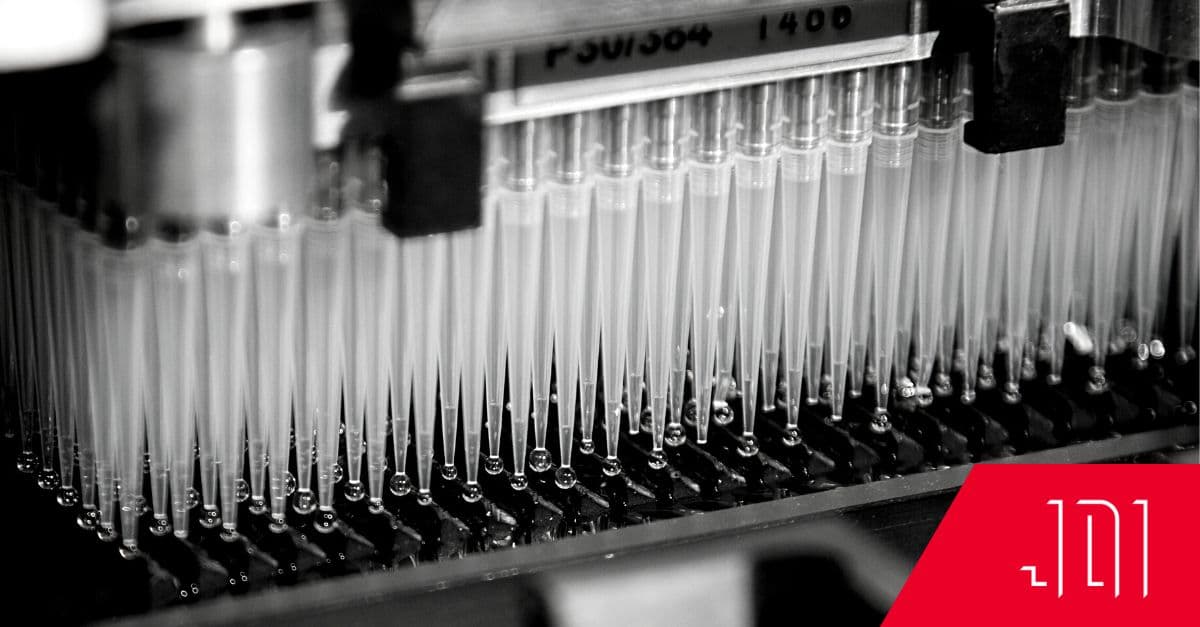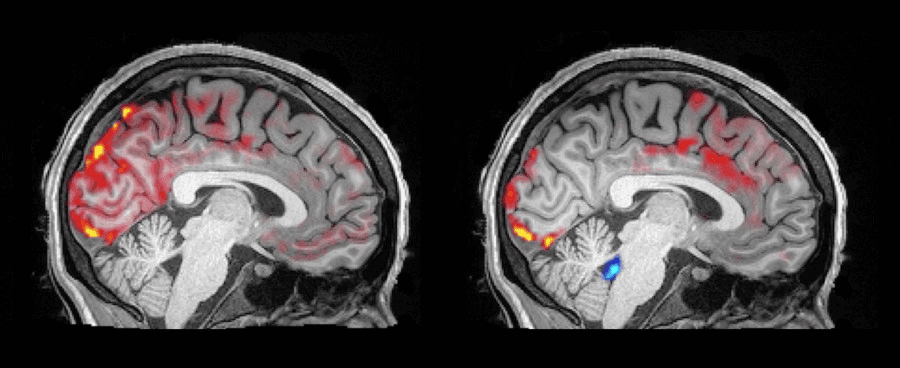Q&A with Dr. Randolph Lopez
Tell us about yourself – what is your background, and how did you end up at A-Alpha Bio?
I grew up in Caracas, Venezuela, and have been captivated by science and technology from a young age. The idea of moving to the U.S. to chase a career in biotechnology was a childhood dream, and I feel incredibly fortunate to have had that opportunity. Selecting a major proved to be a bit of a puzzle for me. I explored subjects like computer science and chemistry. Still, none truly resonated with me until I discovered bioengineering – it stood out to me due to its interdisciplinary nature. I have always enjoyed delving into various subjects to learn how they intersect in fascinating ways.
After completing my undergrad degree at UC San Diego, I joined the engineering team at Illumina. That was in 2012 – when next-generation sequencing was revolutionizing biology, and it was an exhilarating period to be part of the company. I later decided to pursue a PhD in Bioengineering at the University of Washington. My goal throughout the program was to develop a technology in academia that could later be turned into a business venture. I explored a few paths, but the decision to join forces with David Younger and spin out A-Alpha Bio was the most thrilling prospect for me.
David is an incredible business partner – a real dynamo – and AlphaSeq's broad potential as a synthetic biology and protein engineering platform technology strongly resonated with my passion for interdisciplinary work. Since then, I've leaned into my strengths as a multidisciplinary expert, guiding the company’s growth and expanding our platform across various therapeutic areas and applications.
What are protein-protein interactions, and why do they matter for drug discovery?
Protein-protein interactions (PPIs) are crucial for understanding drug discovery. Proteins, often described as the workhorses of cells, interact with each other like puzzle pieces to form complex and functional three-dimensional structures . Engineering and modulating PPIs are powerful strategies to control and direct cellular functions for therapeutic purposes.
A key example of the importance of PPIs is the interaction between antibodies and antigens. During an immune response, the body produces antibodies — a class of proteins that specifically bind and neutralize antigen proteins from pathogens or diseased cells. This interaction is a fundamental part of our immune systems and how we build resistance to pathogens after exposure. Moreover, the pharmaceutical industry has leveraged engineered antibodies as protein-based therapies, leading to significant advances in the treatment of cancer and other diseases over the last two decades. Antibody-based drugs have been approved for infectious diseases, cancer, autoimmune disorders, cardiovascular diseases, and neurological conditions.
Beyond antibodies, the pharmaceutical industry has recently begun exploiting small molecules to enhance PPIs through induced proximity. It is possible for small molecules to bind between two proteins and “glue” them together, which can result in many practical therapeutic outcomes. For example, by promoting an interaction between an E3 ligase and a target protein using a “molecular glue,” we can prompt the cell to degrade the target protein, leading to a therapeutic effect. This approach opens exciting new possibilities for pursuing targets previously considered 'undruggable' due to their lack of an active site traditionally required for small molecule inhibition. Important classes of target proteins, like transcription factors, which are crucial in oncology and other fields, lack active sites but are now accessible as drug targets through induced proximity.
How is machine learning empowering drug discovery?
Machine learning is revolutionizing drug discovery, driven by simultaneous computational advances and the development of high-throughput assays in biology and chemistry. These assays have enabled a deeper exploration of biological systems, from sequencing entire organisms to detailed analysis of proteomes, transcriptomes, and metabolomes. As a result, we can now accumulate extensive datasets that reveal specific insights, aiding drug discovery in once-challenging areas.
Machine learning excels at discerning patterns in large, complex datasets that might elude traditional analysis methods. These models can identify new therapeutic targets, design biomolecules and small molecules that interact with these targets, and forecast the efficacy of these potential treatments both in vitro and in vivo. The success of this method depends on the availability of ample, high-quality data and a clearly defined objective function aligned with significant therapeutic outcomes. A-Alpha Bio is dedicated to producing data of such quality and magnitude, essential for leveraging machine learning in predicting and engineering PPIs. This approach enables the development of therapeutics that would otherwise be extremely difficult to create.
What’s the significance of having the world’s largest database of protein-protein interactions?
A-Alpha Bio's PPI database currently contains over 750 million measured protein-protein interactions.
AlphaSeq, our wet lab platform for PPI data generation, utilizes genetically modified yeast cells. These cells display thousands of proteins on their surfaces. When a strong interaction occurs between a protein pair, the cells fuse, merging their genetic material. The strength of each interaction is quantitatively assessed in parallel through next-generation sequencing, allowing us to analyze millions of interactions in a single experiment. We have streamlined this process, measuring tens of millions of PPIs monthly, which are added to our growing PPI database.
AlphaBind, our machine learning platform, capitalizes on this wealth of accumulated data and project-specific data to predict protein binding properties for particular applications. Importantly, the A-Alpha database covers a broad spectrum of positive and negative PPI data across diverse protein sequences, significantly enhancing its utility for training highly predictive machine learning models.
AlphaBind plays a crucial role in rapidly generating diverse antibody sequences with desired binding strength, specificity, epitope, and bio-developability properties. To achieve this, we utilize data specific to certain antibodies or targets and a vast array of PPI data from numerous unrelated antibody-antigen interactions. This method of pre-training our models with a broad spectrum of antibody-antigen data significantly enhances our ability to solve antibody engineering problems rapidly.
As previously mentioned, “molecular glues” are a new type of drugs that can be used to pursue high-impact targets that have historically been considered undruggable. However, discovering a molecular glue is still enormously challenging – and success depends entirely on picking the right pair of proteins that can be glued together. We use AlphaSeq and AlphaBind to predict, discover, and interrogate suitable protein pairs from millions of potential interactions between E3 ligases and undruggable targets.
First, we leverage a wealth of AlphaSeq-derived PPI data associated with E3 ligases binding to their native targets, synthetic mutants of those targets, and hundreds of proteins with high therapeutic potential. After training with these combined data, we use AlphaBind to predict novel substrates that minimally interact with a particular E3 ligase and where a mutant of that substrate is predicted to increase binding strength. These novel interactions enable the prioritization of novel E3 ligase-substrate pairs for downstream molecular glue discovery.
What are the primary challenges of applying machine learning to large biological datasets?
There are two main challenges when applying ML to biological problems, such as predicting protein-protein binding:
Firstly, batch effects and experimental noise can significantly distort the data. Specialized machine learning techniques are needed to filter out these inconsistencies, ensuring that data from various experiments over the years is accurately aggregated and interpreted.
Secondly, the vastness of protein sequence space presents a formidable challenge. For instance, considering that the average protein is composed of about 300 to 400 amino acids, and each position could be occupied by one of 20 different amino acids, the combinatorial space of possible sequences is staggeringly large. This complexity requires intelligent and efficient experimental design and rigorous model training and validation to effectively navigate and make meaningful progress in understanding this immense sequence space.
What projects are you currently working on?
Our team is currently engaged in various high-impact projects, both in collaboration with partners and to advance our internal pipeline, across biologics and molecular glues.
In biologics, we're working hard to progress our internal pipeline of cis-targeting immunocytokines. These are biotherapeutics created by modifying native cytokines to reduce their receptor-binding affinity and then fusing them to antibodies that localize to specific cell populations. This approach allows us to engineer a range of immunocytokines with different antibodies and cytokines, each uniquely tuned to achieve specific therapeutic outcomes in various oncology indications.
We're also collaborating with Gilead to engineer next-generation therapies for HIV and Lawrence Livermore National Laboratory (LLNL) to develop predictive models for rapid response to emerging biothreats, like novel coronaviruses. Both partnerships benefit immensely from our library-on-library capability, which enables us to measure the binding of thousands of therapeutic candidates against numerous pathogenic variants, a critical factor in designing broad-spectrum therapeutics.
In the field of molecular glues, we also have a combination of pipeline projects and partnerships. We're working with leading pharmaceutical partners in the field of induced proximity, including Amgen and Bristol Myers Squibb (BMS), to discover novel weak interactions that can be enhanced by small molecule glues.Additionally, we've recently begun internal chemistry efforts to discover molecular glues based on the E3-target pairs that we’ve discovered independently. Taken together, our internal and partered efforts mean more opportunities to leverage our unique experimental and computational capabilities to broaden the impact of molecular glues and enable new medicines to improve human health.





